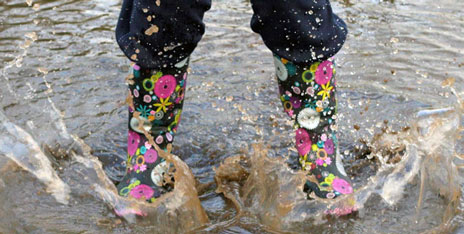
March 22, 2015, by ICCSR
World Water day – 22 March
Recently on an early spring evening, I sat in one of Nottingham’s cosy pubs, deliciously quenching my thirst with a pint of ale while outside a gentle rain nourished meadows and forests. Thinking about my blog to be written on the occasion of the UN World Water Day on 22 March (http://www.unwater.org/worldwaterday) makes me aware of the world’s unjust distribution of resources. It brings to my mind Rawls’ philosophical concept of a veil of ignorance as guiding logic for redistributing wealth and resources across world regions and inter-temporally across current and future generations.
However, even England, usually blessed by all kind of wet weather, is not protected from droughts; after dry weather in summer and autumn last year, the Environmental Agency repeatedly warned of water shortages, especially for the South East. English and Welsh citizens were asked to replace worn tap washers and to wash fruit and vegetables in a bowl in order to save water; a strange situation for a seemingly water-rich country – which English residents may increasingly need to get used to in the future.
Climate change projections for the year 2050 predict generally hotter and drier summers in England (Source: BBC). Water scarcity due to changed climatic conditions and to growing population makes England more and more dependent on imported crops (Source: The Independent). It might fit better into the conventional picture of England – but is certainly no less threatening – that at the same time the frequency of flooding is projected to increase.
At least ale – or beer in general – is a comparatively water-friendly drink. In fact, the water footprint of beer is rather low; one pint of ale consumes approximately 150 litres of water. That may sound a lot to some; it is however rather little compared to a single cup of fruit juice consuming 190 litres of water (Source: OECD). It is rather obvious, and I like this thought, that beer seems to be the drink of choice of responsible citizens, even in England. It seems that water consumption during agricultural primary production and brewery processes does not constitute too much of a problem in still relatively water-abundant countries like England.
This somewhat soothing assessment changes when my eyes wander from my pint of ale to the sleeves of my shirt. I know that my shirt is 100% cotton and is comfy to wear. Environmentally speaking though, cotton shirts are a completely different story. The cotton shirt supply chain usually reaches far to other continents, most frequently to southern and south-east Asia, thereby having severe impacts on (drinking) water quality during various production stages, for example through water contamination during the dying process. The most water demanding production step is the primary production of cotton which cannot be done in relatively water-rich England but rather requires tropical or sub-tropical climatic zones. These zones are rather prone to desertification once the delicate eco-system balance is disturbed; and the balance can very easily be disturbed by excessive mono-cultural cultivation of thirsty cotton plants. The production of 1kg of cotton requires around 4000 litres of water (Source: OECD); this means that the production of cotton for one single shirt may take up to 3000 litres of water. The Aral Sea has shrunk to 10% of its former size due to agricultural irrigation policies (particularly for cotton) and is only one striking example of the severe and often irreversible impacts of over-exploitation of water resources.
The international community has realised the implications of water supply accessibility on the health and welfare of people, in particular in many poor developing countries. The United Nations Convention to Combat Desertification (UNCCD), located in Bonn (Germany), was signed in 1994. However, the effectiveness of this convention is under debate. One major challenge is how to sensitize not only state policies but also individual citizens and consumers to the issue of water scarcity and looming desertification. Against the background of complex international supply chains that bring many products into European supermarkets, such awareness-raising is difficult. In any case, the water foot print represents a useful tool for consumers to make informed buying decisions. For companies, the water hand print would be (psychologically) more acceptable. The water hand print does not focus on the resource consumption itself like the foot print but rather on all the activities companies undertake for reducing water consumption and ensuring quality, regeneration and accessibility of water.
By Dr. Stefan Gold
Assistant Professor in Sustainability Management, Systems and Reporting; ICCSR
Nottingham University Business School
No comments yet, fill out a comment to be the first

Leave a Reply